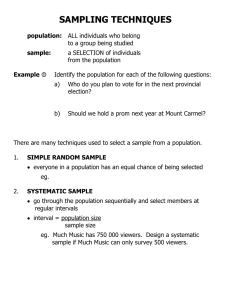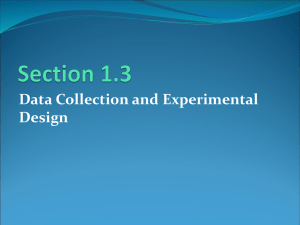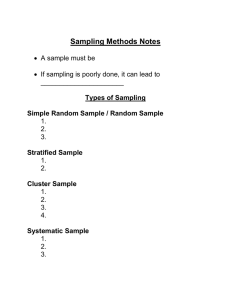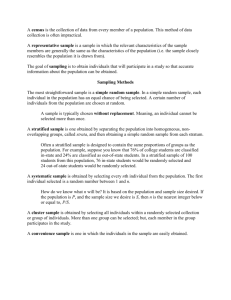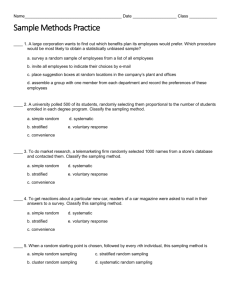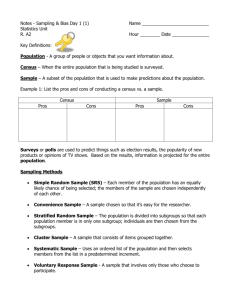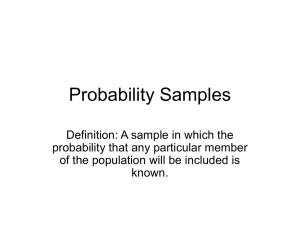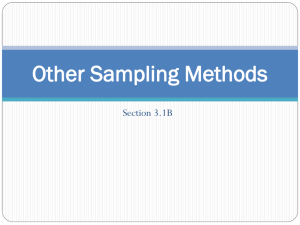The 6 Sample Survey Methods
advertisement
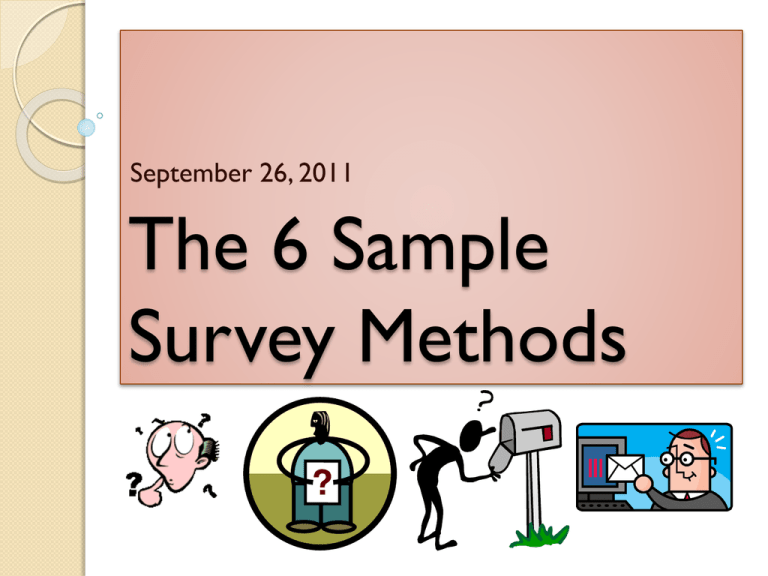
September 26, 2011 The 6 Sample Survey Methods So far, we have discussed two BAD methods… 1. Voluntary Response Method People who respond usually have strong opinions, causing bias to occur. You respond by write in, call in, or Internet voting. This method is easy to conduct, you get fast results, and it’s usually more cost effective. What are some examples you have participated in? 2. Convenience Sampling Method The people surveyed are the easiest to reach (same room, same store, etc.). The people surveyed are biased because they have this similarity to share. Even if they are “randomly” chosen, anyone who does not use that store, attend that class, etc., is automatically excluded. This method is also easy to conduct. …and one GOOD method… 3. Simple Random Sample (SRS) Every person has an equal chance of being chosen to be a part of sample. Participants are chosen by a table of random digits, a calculator or computer, or just by drawing names from a hat. Bias could still occur because some groups could be under represented as a result of this random sampling (“under coverage”) And now for some other types of samples… 4. Systematic Sample Each member of the population is assigned a number. The starting number is randomly selected, and then the sample members are selected at random intervals from the starting member. Example: randomly chose the 15th person, then the interval was every 4th person after that, so the 15th, 19th, 23rd, 27th, and so on, were chosen for the survey. Systematic Sample… Be careful using this in case there are regularly occurring patterns already in the population (every 4th person has a common quality). A problem here is that as soon as the starting number and interval are determined, the randomness for the other numbers is gone and everyone on the list knows if they will or will not be chosen. Cluster Sample… 5. Cluster Sample Can be used when the population falls into naturally occurring subgroups (like zip codes). To select a cluster sample, divide the population into groups (clusters) and select all the members in one or more (but not all) the clusters. Other examples: different periods of the same course, different branches of a bank, etc. Cluster Sample… Groups which are not chosen are now experiencing under coverage. They must rely on the results from other groups, hoping that they will effectively represent their interests. Stratified Random Sample… 6. Stratified Random Sample Divide the sampling frame (everyone you are choosing from) into distinct groups (strata). Take SRS’s of each strata. Example: If there is concern about under coverage for ethnicity/race, this could reduce/eliminate that by creating strata for each identified group. Stratified Random Sample… The benefit here is that all groups are represented. But will the groups get the same number of participants or the same ratio of participants??? If every group is given an equal count, under coverage can occur again. So they must be given the same RATIO of participants. So, what do you think??? 1. 2. 3. 4. 5. 6. Voluntary Response Sample Convenience Sample Simple Random Sample Systematic Sample Cluster Sample Stratified Random Sample Which are good, which are bad, which are both?

